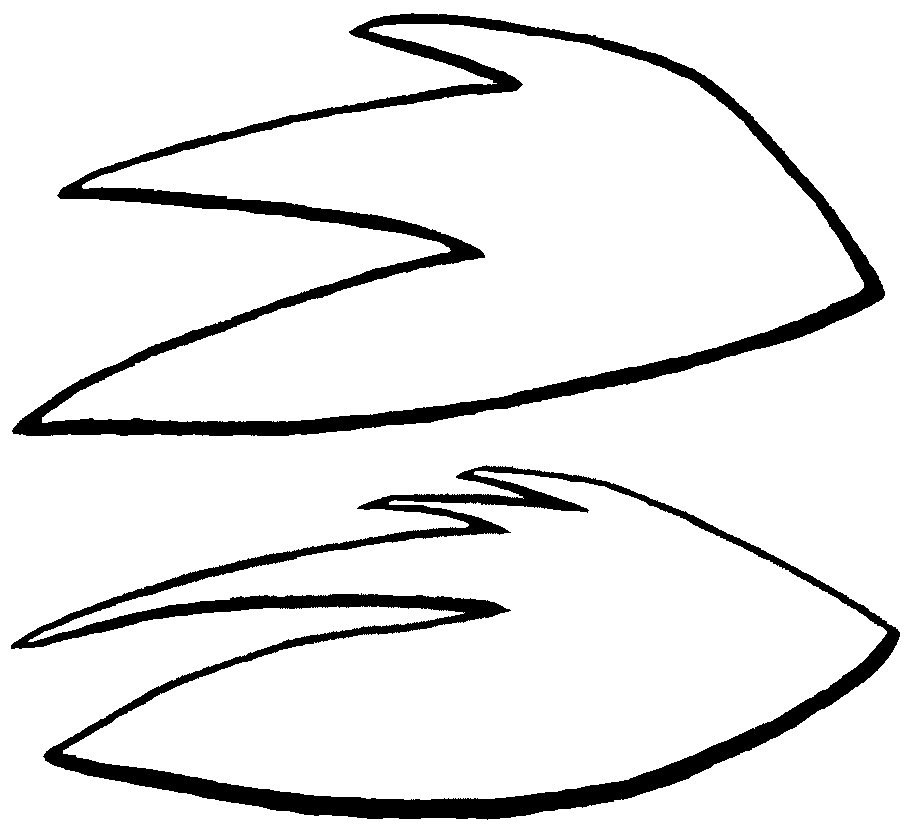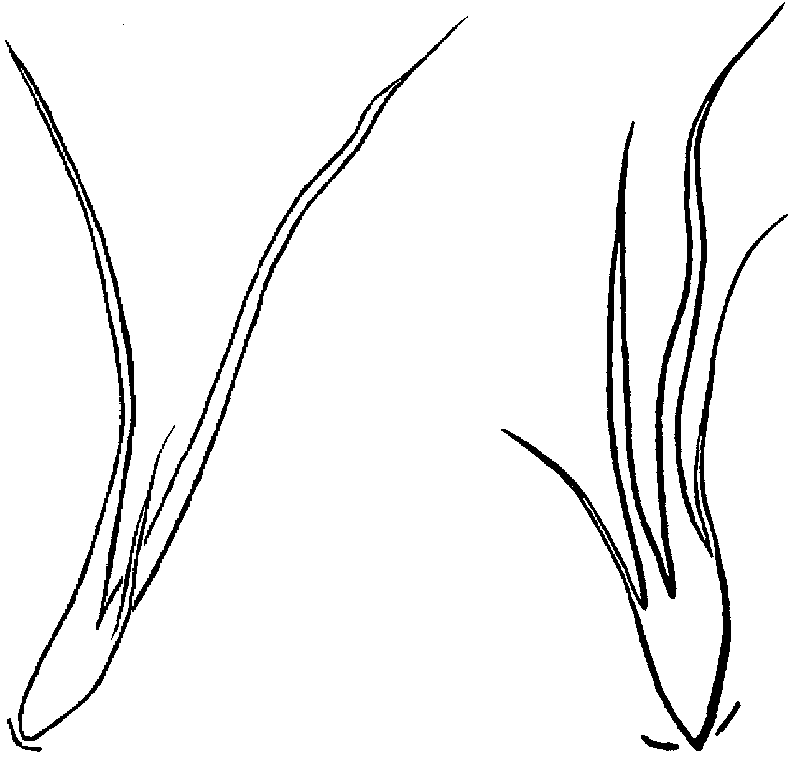p. 8.176. Olecryptotendipes replaces Harnischia complex genus C Epler; because the adult male is yet to be found/described, no species name can be applied. See Orel, O.V. 2022. Additional data on Olecryptotendipes secundus (Zorina, 2003) from Russian Far East, with a description of preimaginal stages (Diptera: Chironomidae). Zootaxa 5205: 87-96.
25-x-2024
pp. 8.65-8.67. Two species have been removed from Einfeldia and placed in the genus Benthalia. We now have B. brunneipennis (Johannsen) and B. natchitocheae (Sublette).
26-iii-2019
pp. 8.60, 8.64. Dicrotendipes sp. A has been described as Dicrotendipes hulberti. See: Epler, J.H. 2016. A new species of Dicrotendipes (Diptera: Chironomidae) from Florida. Zootaxa 4208: 77-83
16-xii-2016
pp. 8.12, 8.125. Although I posted information way back in 2006 concerning the occurrence in Florida of Polypedilum nubifer, I failed to post any notes about how it would key in my 2001 manual. This species, the sole member of the subgenus P. (Tripedilum), is relatively new to the US. It has a typical Polypedilum mentum but has antennae with Lauterborn organs at the apices of segments 2 and 3. It will not key past couplet 27 (p. 8.12) in the generic key for Chironominae because of its oddball antennae. If couplet 27’ is changed to: “ Antennae with 4-7 segments; if with 6 segments, then without alternate Lauterborn organs apically on segments 2 and 3; if with 5 segments, Lauterborn organs usually present at apex of segment 2, but may be present at apex of segment 2 and segment 3”, the species will key to Polypedilum.
Note I had posted information on this matter previously (5-iv-2008), but I recently found I mixed up some species and posted incorrect information. I have removed the previous post.
21-ix-2015
NEW CHANGES resulting from the publication of the new Holarctic Keys to larvae, and how they relate to Florida's midges, can be found here.
16-vi-2015
p. 8.123-124. Although I stated that the larvae of
Phaenopsectra flavipes and
Ph. punctipes were "inseparable", the two species can be separated as larvae. The larva of
Ph. punctipes (Wiedemann)(not illustrated in my 2001 manual, figures on p. 8.123 are of
Ph. flavipes) has a very deep, rounded notch (diastema) on the mandible, the mentum is steeply descending laterally, the 3 plates of the pecten epipharyngis are densely adorned with numerous small teeth (appears spiny like a hedgehog) and there usually is a strong, well defined line between the frons ("frontal apotome") and weak sclerite (clypeus) anterior to it. In Florida
Ph. punctipes is known from the northern tier of counties. In
Ph. flavipes the diastema is not deep and rounded, the mentum does not steeply descend laterally, the 3 plates of the pecten epipharyngis bear large teeth and the line between the frons and the clypeal sclerite anterior to it is weakly delimited or almost non-existent (see figures on p. 8.123). This information was added over a year ago to the "New Taxa Added" page for the Florida checklist, but I somehow managed to not include it here.
11-xii-2012
p. 7.47, 7.49. In a recent paper (Fu, Y & O.A
Sæther. 2012. Corynoneura Winnertz and Thienemanniella Kieffer from the Nearctic Region (Diptera: Chironomidae: Orthocladiinae). Zootaxa 3536: 1-61),
Corynoneura floridaensis Fu &
Sæther was described. This replaces my C. sp. B.
8-xi-2012
p. 8.146. "Stempellina sp. C" is
Neostempellina reissi. This was changed some time ago on the Florida checklist but I negelected to mention it here!!
21-xii-2011
p. 8.98. Tanytarsus sp. W is Paratanytarsus longistilus; this taxon was originally based on a specimen with a split premandible, making it appear 3-toothed. Thus, there is NO Tanytarsus sp. W!
2-ii-2011
p. 8.98. Paratanytarsus longistilus Bolton, Ekrem, Sublette & Sublette added. Orignally diagnosed as Micropsectra sp. D in my 2001 manual.
Also note that Stelechomyia perpulchra is now known as Kribiodorum perpulchrum.
22-i-2011
p. 7.163. Phytotelmatocladius delarosai described, replaces
Orthocladiinae genus H. See: Epler, J.H. 2010.
Phytotelmatocladius, a new genus from bromeliads in Florida and Brazil (Diptera: Chironomidae: Orthocladiinae). Pp. 285-293 in Ferrington, L.C., Jr. (ed.) Proceedings of the XV International Symposium on Chironomidae. Chironomidae Research Group, University of Minnesota, St. Paul, MN. 385 + vii pp.
18-ii-2010
p. 8.128. Asheum has been re-established as a genus, with the sole SE US species
A.
beckae (Sublette). This was done in a brief statement on page 6 of Oyewo, E.A. and O.A
Sæther. 2008. Revision of Polypedilum (Pentapedilum) Kieffer and Ainuyusurika Sasa et Shirasaki (Diptera: Chironomidae). Zootaxa 1953: 1-145.
8-xii-2009
p. 8.108. Martin Spies has recently "split"
Parachironomus supparilis into three species; the species we have here is
P. longistilus. See: Spies, M. 2008.
Parachironomus valdiviensis, spec. nov., and other changes to nomenclature of Neotropical Chironomidae (Insecta, Diptera). Spixiana 31: 173-175.
21-v-2008
p. 7.80. At a recent (February 2008) larval workshop I was teaching, biologist Jessica Bevins (Kentucky Division of Water) brought some specimens of my
Hydrobaenus sp. O. I’ll be damned if that thing doesn't have a vestigial beard, similar to
Zalutschia! The beard is quite minuscule, only 4-5 minute setae – and appears to be visible only with "Nomarski" (DIC) optics. I did not see this beard when I did the 2001 manual; I had only a phase contrast scope at that time (rechecking with the phase contrast failed to resolve this almost invisible beard on most of the specimens in my collection). Thus, if you have a microscope with Nomarski optics, my
Hydrobaenus sp. O may key to
Zalutschia!
p. 8.158. Pete Cranston recently described
Tanytarsus bromelicola, a species found in bromeliad phytotelmata (=water held by plants) [reference: Cranston, P.S. 2007. A new species for a bromeliad phytotelm-dwelling
Tanytarsus (Diptera: Chironomidae). Ann. Entomol. Soc. Am. 100: 617-622]. Although I collected this taxon in 1980, from
Tillandsia phytotelmata at Donald MacDonald Park in Indian River Co., I never put it in my identification manuals.
Tanytarsus bromelicola will key to couplet 17',
T. sp. J, in the 2001 key. It can be easily separated by the pale median tooth of the mentum; that of
T. sp. J is dark.
5-iv-2008
p. 8.2. The second argument of couplet 2' should read "antennal blade extends past apex of segment 3" [not "segment 2"]. The figure is correct, but my typing wasn't ... thanks to Doug Strom for pointing this one out.
Also, a new publication has been published that updates the names of two Florida midges. My
Stempellinella sp. A has now been described as
Stempellinella fimbriata Ekrem. My tentative identification of another Fl species,
S. cf.
leptocelloides, has been verified as the real thing, so the "cf." may be deleted from the name. The paper: Ekrem, T. 2007. A taxonomic revision of the genus
Stempellinella (Diptera: Chironomidae). Journal of Natural History 41: 1367-1465.
8-viii-2007
p. 4.56. An additional species of
Monopelopia has been found in the Everglades by Rick Jacobsen. This is
M. caraguata, described in: Mendes, H.F., C.B. Marcondes & L.C. de Pinho. 2003. A new phytotelmatic species of
Monopelopia Fittkau, 1962 (Insecta: Diptera: Chironomidae: Tanypodinae) from South Brazil. Zootaxa 262: 1-10.
Below is a key that will separate all known North American
Monopelopia larvae:
Key to Cantopelopia and Monopelopia larvae of North America
1 At least one dark claw on posterior parapod …………………………….............................................………….…… 2
1’ All claws of posterior parapod colorless or pale yellow ………………..........................................……………….... 3
2(1) Teeth of ligula in relatively straight line; procercus length/width 3.0 or less; common …..
M. boliekae [SE US]
2’ Teeth of ligula in concave arc; procercus length/width > 4.0; rare ………......................……
M. tenuicalcar [E US]
3(1’) Small claws of posterior parapod with at most a few small teeth on inner surface .........…..
M. tillandsia [FL]
3’ 2-3 small claws on posterior parapod with many large inner teeth .................................................................. 4
4 (3’) 3 small claws on posterior parapod with many large inner teeth ......................…
Cantopelopia gesta [SE US]
4’ 2 small claws on posterior parapods with 5 or more large inner teeth .............................................................. 5
5(4’) AR 2.22-2.53 …....................................................................................................
M. mikeschwartzi [Jamaica]
5’ AR 3.08-3.18 …..........................................................................................................…
M. caraguata [FL, Brazil]
11-xii-2006

